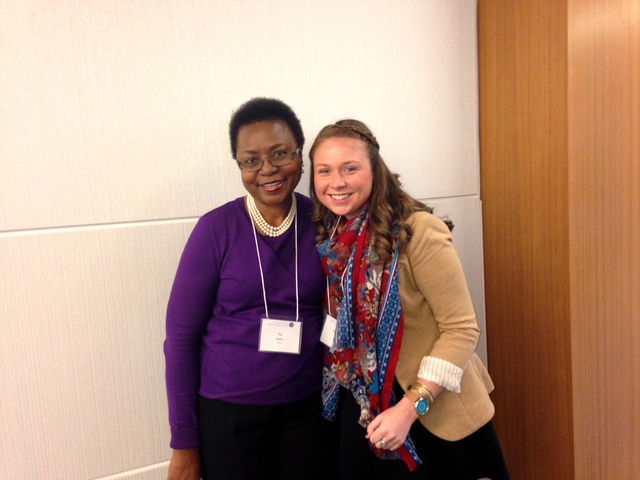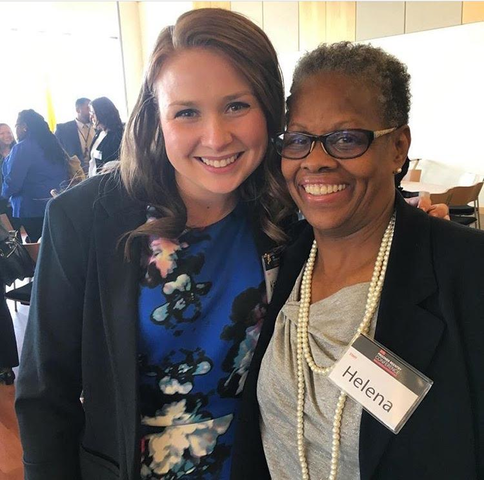NEW YORK — When I first went to Rikers Island, I did not anticipate the impact this would have on my academic and professional career. The initial trip across the city to the confines of the jail made me question my place within the justice system and how I could be an advocate for change.
The five months of taking a class in jail led me to the nation’s capital to join the team at the Campaign for the Fair Sentencing of Youth (CFSY), a Washington-based juvenile justice advocacy organization.
Within the first five hours of starting my job there, I was handed a stack of letters from prisoners and tasked with reading and responding to all of them. When I noticed the “forever” label on each stamp, I wondered what that meant for the authors of these letters, who are all sentenced to life without parole.
Some letters were written so beautifully, leading the reader to question just how many pleas for help they have stayed up to complete in their cells. Regardless of length, appearance or the picture on the stamp, all the letters had one thing in common: They were written by people who were sent to prison as juveniles.
Every day, through each letter, I was brought on a journey detailing horrific factors, such as abuse, lack of resources or poverty, that led to the authors’ crimes. Alongside these grueling details, there was often hope: hope that we would write back, hope that they might get resentenced, hope that they wouldn’t spend the rest of their lives in the same cell they were sent to before their brain was even fully developed.
Reading these letters, it struck me that the same reentry process that so many of my Rikers classmates dreaded, rightfully so, was all that these individuals could hope for.
Despite what we know about a child’s developing brain and its capacity for change, more than 2,500 individuals in the United States have been sentenced to life-without-parole sentences for crimes committed when they were under 18. We are the only country in the world with this inhumane practice. These children were sentenced to spend the rest of their lives in prison without consideration for the factors that led to their incarceration.
The horrifying details I read from people serving juvenile life without parole reflect national statistics that tell us we need to take better care of America’s youth. Nearly 80 percent of children facing these sentences reported witnessing violence in their homes, and a vast majority witnessed violence in their neighborhoods.

Esi Mathis, an advocate for individuals impacted by the justice system and the mother of a child who was sentenced to three life without parole sentences at the age of 17, and Kathleen White in 2014.
For more information about RACIAL AND ETHNIC FAIRNESS, go to JJIE Resource Hub | RACIAL AND ETHNIC FAIRNESS
Many of these children experienced abuse themselves: 80 percent of girls and nearly half of all children facing this sentence have been physically abused. Furthermore, 77 percent of girls and 20 percent of all juvenile lifers said they have been sexually abused. And just as African Americans are disproportionately represented throughout the justice system, they are also in these cases. Black youth are sentenced to life without parole at a per capita rate 10 times that of white youth.
Recognizing these statistics represent real lives, in 2012, the U.S. Supreme Court ruled that it is unconstitutional to impose a mandatory life-without-parole sentence on a juvenile. Since the day I opened my first letter from someone serving a juvenile life sentence in 2014, progress continues to be made. As recently as 2016, the Supreme Court upheld that 2012 decision and said it must apply to all individuals serving juvenile life without parole, regardless of where and when they were sentenced.
As resentencing hearings begin and that once unattainable dream becomes an actual possibility, I think about the difficult road to reentry my clients must endure. The uniquely difficult challenges faced by those who went away as children are unfathomable. How can we do better as a country to ensure all people have a meaningful chance of thriving in our society?
Going to jail opened my eyes to the lived reality of the 2.3 million Americans incarcerated and all those who have been released from jails and prisons throughout the country. Society functions better when all people can achieve self-sufficiency, which cannot happen unless we stop victimizing marginalized communities.
Criminal justice reform is not an isolated issue; it intersects with and relies on racial, gender and economic justice. Whether it was a low-level offender trying to advance his education, a formerly incarcerated person treating their job search like a full-time gig or someone who has grown up in prison with little hope to be released, these individuals left their mark on me. The stories of the victims of America’s addiction to incarceration have the same message: The criminal justice system is broken.
To adequately fix the system, all Americans must pick up the pieces and get to work. Sustainable reform requires informed participation on both sides of the aisle; criminal justice reform matters not only to those incarcerated and their advocates, but also to those not currently invested.
Society flourishes when all people can meaningfully contribute to a greater good. We must ensure that all people have a meaningful chance at being productive members of society and reentering that society if they have made a mistake so they can be freed from the chains of a broken system.
Kathleen White is a former Jesuit Volunteer with a B.A. in history and peace studies and an advocate for human rights, juvenile justice and prison reform. In March, she will begin instructing ESOL conversation classes for inmates on Rikers Island before graduate school at the University College Cork in Ireland as a George J. Mitchell Scholar. At UCC, she will study sociology while researching Ireland's juvenile justice system.
Related articles:
How Going to Jail Changed My Life Path, Part 1
How Going to Jail Changed My Life Path, Part 2

Hello my name is James i myself went to prison for 3 years and it changed my life for ever . I was trying to get off of crack for most of my life my first NA meeting was back in 1985 . In 2009 of July I was on a crack run and things got so bad for me that I walk into a bank and robed it and went to prison and it was the best thing that could have ever happened to me I have been sober since that day . What a story I have to tell now I brought a house and work everyday .